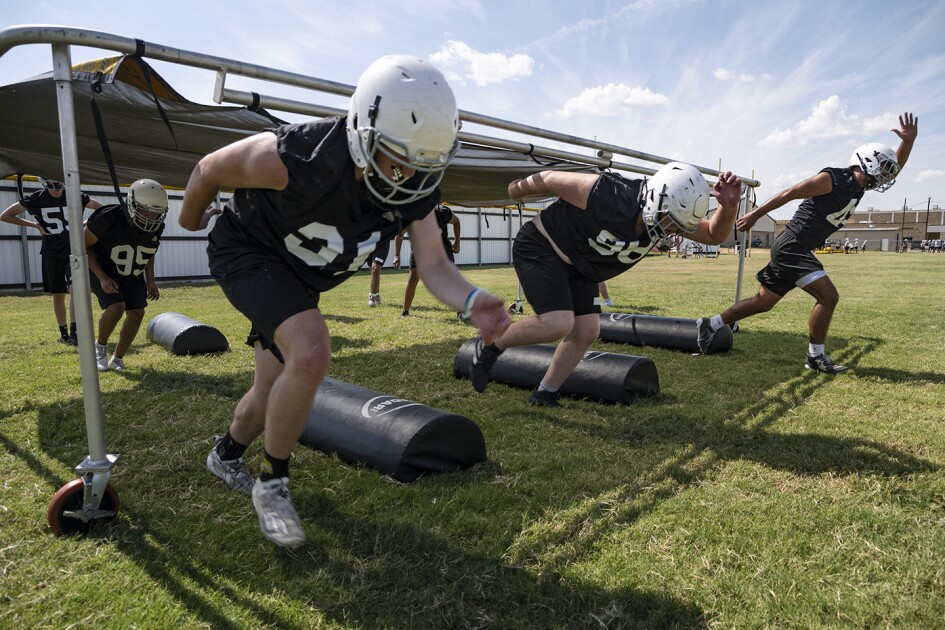There has been a lot of frustration from educators lately about how cellphones are undermining students’ social skills—students don’t make eye contact with adults, they compulsively check their phones, and they get anxious if they don’t have their phones with them all the time.
But schools are missing opportunities to teach students important skills to better manage their cellphone and social media use, argues Shreeya Gogia, 18, a youth advocate for improving young people’s mental health who works with the nonprofit Work2BeWell. Gogia recently graduated from Carroll Senior High School in Southlake, Texas.
For example, she thinks schools should teach students proper cellphone etiquette alongside digital literacy.
Gogia spoke with Education Week about what the adults in schools most misunderstand about teens’ cellphone and social media use. Like many of her peers, Gogia thinks older generations fail to see a lot of the benefits of the technology that undergirds teens’ lives. (This conversation was one of three interviews with teens about their cellphone and social media use. The other two interviews are here and here.) The following conversation has been edited for length and clarity.

Why do you think schools should teach students phone etiquette?
Schools should teach students phone etiquette because it allows them to understand when it’s appropriate to use phones. So, they’re not only active listeners in school but in society as a whole. What we learn in school obviously affects how we interact outside of school. So having an educational space that informs us about phone etiquette can also allow us to take that outside of the classroom and change our beliefs on when and when not to use our phones.
I think there is a vast amount of information that you can learn on the internet and I've learned so much from it, but I've equally learned as much information just by connecting with someone.
A great time to have a discussion about phone etiquette is in an assembly or in an email or even a 15-minute discussion on the first day of school. Having this when it is the beginning of the school year can set your expectations and have teachers set their expectations for the year so students know what they’re going into.
Cover the important things: use phones when it’s appropriate, not when there’s a lecture and not when there’s peer time. And also discussing when and when not to do this when it’s in the workplace or in places like movie theaters or on the road.
How did the pandemic change your technology habits?
Because you were left at home for 24 hours and could have access to all the technology, it’s definitely something that I’m so used to holding or checking or it being with me. I almost have learned to compulsively check it in times that I wouldn’t deem 100 percent appropriate.
Because people were allowed to be on their phones all the time, because there were no repercussions to what you posted on social media, and because you didn’t have to see these people anymore, more people became interested in advocacy and posting different types of content. You had so much time on your hands, too.
As an advocate for improving youth mental health, what are some pros and cons of social media that you have experienced?
I do a lot of advocacy. [In Work2BeWell] we have about 34 clubs across the nation. And what’s really good is that social media has allowed us to enter so many different schools and have different programs and publish free curriculum, which is allowing teams to start these conversations about mental health, which definitely helps to break the stigma [around it].
"It's okay to not be on your phone. It's okay not to post where you are on your Instagram story or be focusing on a picture that you can take [...] and really just be in the moment."
But at the same time, social media can exacerbate so many mental health issues. On Tumblr and TikTok, there are people who are what they call “body checking,” posting a video just to show off how much they’re starving themselves and other types of things.
It definitely can be a double-edged sword, but I think that people are realizing that these things are so negative, which is why not as many ED [eating disorder] TikToks are posted. Tumblr isn’t very popular anymore, and people are willing to point out like, “Hey, this is unhealthy. Do you need help?”
Do you feel like the arc of social media has trended more positively?
Youth are doing groundbreaking things, so having access to see other people doing the same things inspires people. If you see some influencer standing up for something and you also are passionate about the same thing, you might take the same steps or learn how to get involved. And because social media allows the transmission of information so fast, people are getting involved more, wanting to question why life has to be like this, and working to create more social change.











